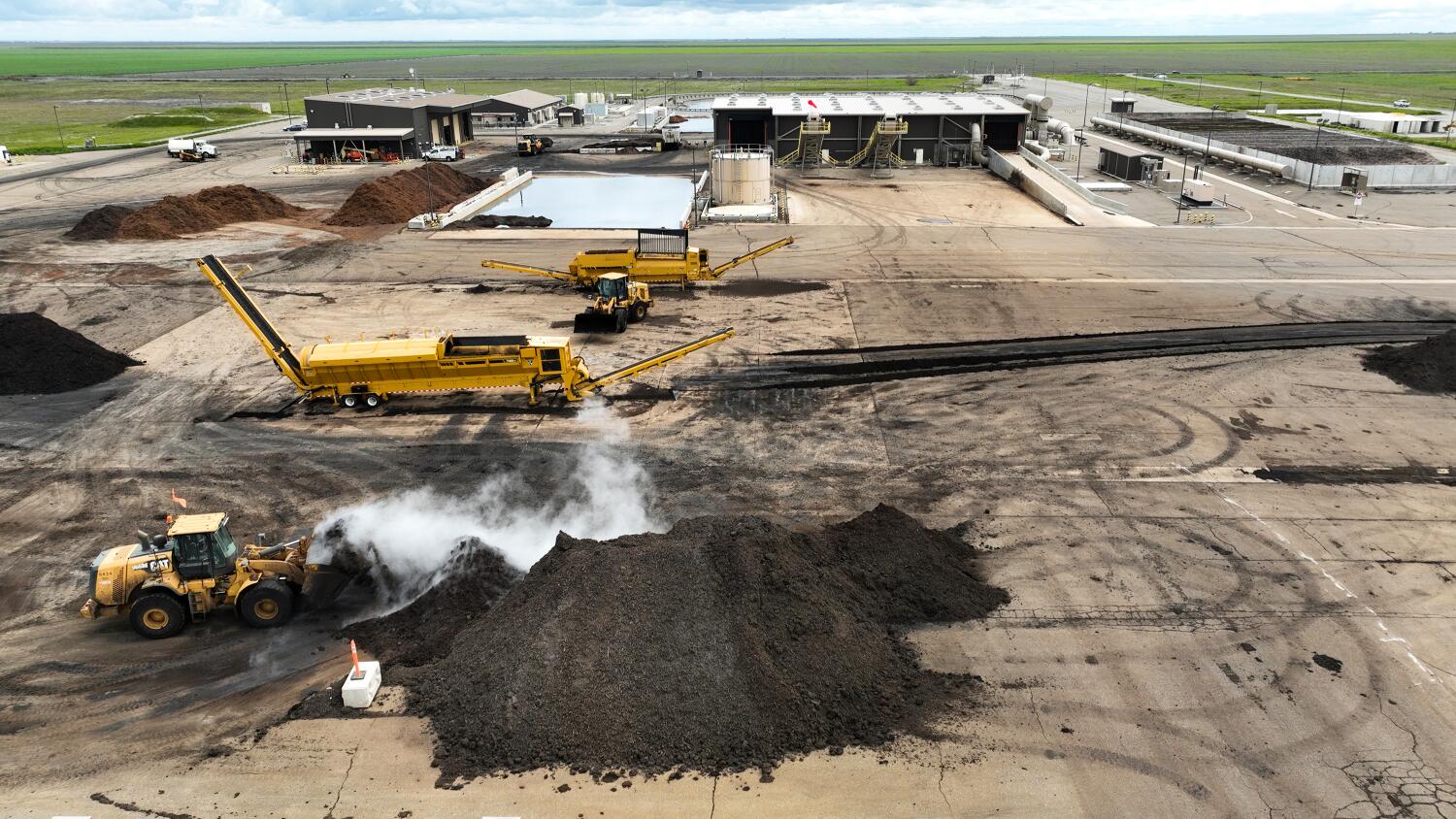
A team of UCLA researchers has put a new spin on the '70s rock classic “Dust in the Wind,” only this one is bleaker and bleaker than the original Kansas hit.
They found that wind picks up microplastics from human wastewater-based fertilizers at higher concentrations than previously known, and may be an “underestimated” source of airborne plastic bits, flakes and threads.
“If you blow wind over soil with microplastics, you would expect there to be a similar amount of soil and microplastics in the dust,” said Sanjay Mohanty, a professor of civil and environmental engineering at UCLA. “But here we find less dirt in the dust and many more microplastics. “That means that every time the wind blows, the particles preferentially leave the ground.”
That's problematic, he said, because it means people are potentially inhaling these particles, which measure between 1 and 5,000 micrometers, or 5 millimeters, in size. Most of these particles are likely coated in harmful chemicals, such as plastic additives, heavy metals, pesticides, and other chemicals that have been poured down the drain or leached from streets into storm drains.
It is these “passenger” chemicals that constitute the biggest health problem, Mohanty said, citing a growing body of research on known and potential harms.
“The more plastics we take out, the more that ends up in soil, water and people's food and bodies,” said Avi Kar, senior attorney and director of the Department of Health and Food, People at the Natural Resources Defense Council. & Communities Program. “And they will bring with them the many harmful chemicals used to make plastic.”
In many major cities around the world, including Los Angeles, municipal sewer systems process human waste by separating wastewater from biosolids. Wastewater is filtered and often injected into the soil, where it is filtered back for use as irrigation and, in some cases, drinking water. Biosolids (the waste left behind) can be dried, repackaged and sold as fertilizer.
Globally, annual biosolids production is estimated to be 100 million tons, according to Mohanty and his colleagues. That number is projected to increase to 175 million tons per year by 2050. According to U.S. Environmental Protection Agency estimates, more than 2 million dry metric tons of biosolids are applied to land in the United States each year.
In 2011, 51% of the country's biosolids were applied to land and agricultural fields; 22% was disposed of in landfills; 16% were cremated; and 11% were subjected to other management practices.
Sludge-based fertilizers are attractive for environmental and economic reasons. They provide farmers and gardeners with a natural, sustainable means to reintroduce nutrients into the soil and extend the life of municipal landfills.
The Los Angeles County Sanitary Districts, for example, treat wastewater for 5.6 million people. In 2022, they produced approximately 110,000 tons of fertilizer, of which 20,000 were processed at the Tulare Lake Compost site, southeast of Kettleman City.
In 2021, Mohanty and his colleagues found that sludge-based fertilizers contained many more plastic particles than previously suspected.
More recently, however, the team set out to determine what was happening to the compost particles. To do this, they spread fertilizer on fields in Lind, Washington, about 75 miles southwest of Spokane. They then placed portable wind tunnels over the plots and turned on the fans. They found that microplastics were about 2.5 times more likely to be airborne than other soil particles.
The reason for this, Mohanty said, is that microplastics are not “sticky” like the other elements. He said California farmers and gardeners often use water on their fields and lawns during the summer months not only to water crops but also to reduce dust. Because plastic doesn't absorb water, it doesn't stick like minerals and organic matter in soil.
“The findings are not surprising in light of the ubiquitous nature of plastics in agriculture and the low densities and weights of microplastics,” said Mark Gold, director of the Water Scarcity Solutions Program at the Resources Defense Council. Naturales, who did not participate in the investigation. .
Shelly Walther, an environmental scientist with the Los Angeles County Sanitary Districts, said she was a little cautious about how the researchers identified and counted the microplastics in their samples.
He said that while research into microplastics has been growing, there are concerns in the scientific community about the methods and technologies used, as well as the reliability and reproducibility of some of the research.
But, he said, it's clear that there are microplastics in biosolids and he's not surprised that some can become airborne. However, he questioned whether all plastics can be blown away by the wind, saying some are denser and less likely to be blown by the breeze.
However, he said, plastic is a real and growing problem for the waste stream.
Los Angeles sanitation districts have supported laws that would help reduce the amount of plastic entering our waste at the source, including those that would require filters in washers and dryers.
Mohanty said one of the biggest sources of microplastics in wastewater was washing machines.
“Every time we wash our clothes, we produce millions and millions of fibers” that drain directly into our wastewater, he said.
Bryan Langpap, a spokesman for the health districts, said “Hallelujah” when asked about laws designed to reduce plastic (and other pollutants) at its source.
“We just have to stop producing so many things like this. Because once it's in our consumer products and in our homes, you can't stop it from getting into the air and moving,” he said, highlighting research that has found plastic particles in the Arctic, in the deepest trenches of the ocean. , and almost everywhere scientists have looked.
He said the problem may be even bigger than we know, citing recent research that found hundreds of thousands of nanoplastic particles in single-use water bottles, an issue Mohanty has also considered when it comes to plastic in fertilizers. .
He said that unlike microplastics, their models show that nanoplastics, which range in size from 1 nanometer to 1 micrometer, are more likely to stick to soil due to a stronger attractive force on surfaces. And while that may prevent them from reaching the air and our lungs, they may also be being absorbed by crops and plants.











